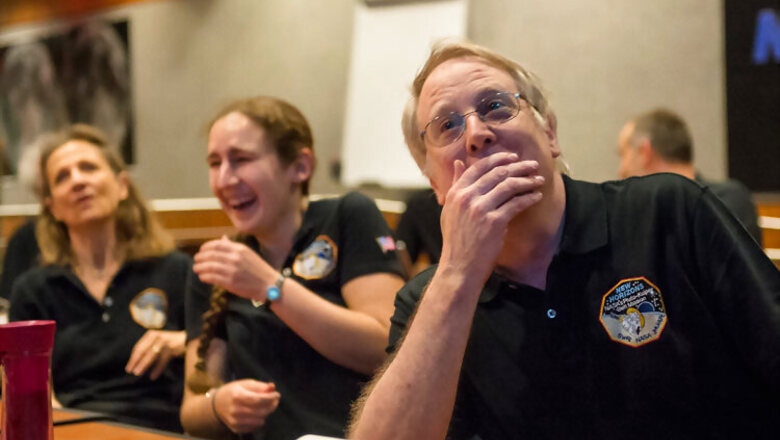
views
An unmanned NASA spacecraft whizzed by Pluto on Tuesday, making its closest approach in the climax of a decade-long journey to explore the dwarf planet for the first time, the US space agency said.
"The New Horizons spacecraft passes its closest approach mark at Pluto after a three billion mile journey," a NASA commentator said as spectators waved flags in a crowded room at the Johns Hopkins Applied Physics Center outside the US capital, Washington.
The flyby happened at 5:19 PM IST (1149 GMT), with the spacecraft running on auto-pilot.
(Also read: Pluto facts that we all should know)
It was to pass by Pluto at a distance of 7,767 miles (12,500 kilometres).
"It is a moment of celebration because we have done the anchor leg," said New Horizons principal investigator Alan Stern.
"We have completed the initial reconnaissance of the solar system, an endeavor started under President (John F) Kennedy more than 50 years ago, continuing today under President (Barack) Obama."
NASA expects to receive a signal from the spacecraft later this evening to find out whether or not it survived the encounter.
Experts said there was a one in 10,000 chance that the craft, the size of a baby grand piano, could collide with debris in the region beyond Neptune, known as the Kuiper Belt.
Never before has a spacecraft ventured into the Kuiper Belt, and New Horizons has been on its way there for more than nine years.
The New Horizons mission launched in 2006, the same year that Pluto was downgraded to "dwarf planet" status due to the celestial body's small size.
New Horizons is the first spacecraft to fly past Pluto, and its seven scientific instruments aim to reveal details of the surface, geology and atmosphere of Pluto and its five moons.
Already, scientists have learned from New Horizons that Pluto is 20-30 kilometres larger than previously thought, with a radius of 736 miles (1,185 kilometres).
Scientists have also confirmed the existence of a polar ice cap on Pluto, and found nitrogen escaping from Pluto's atmosphere.
"This is truly a hallmark in human history," said NASA's head of the science mission directorate, John Grunsfeld.



















Comments
0 comment